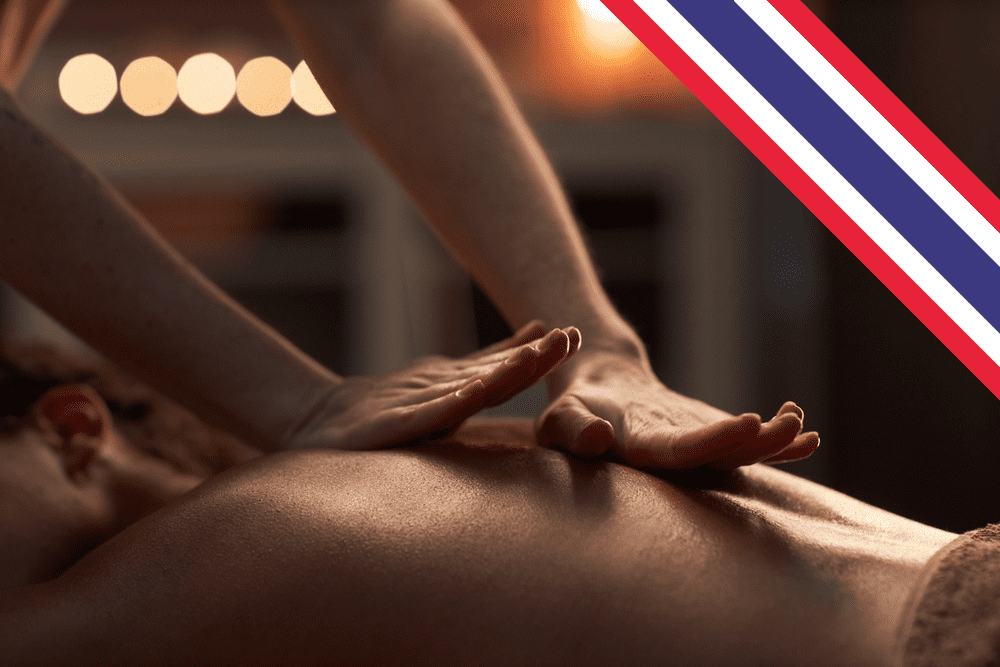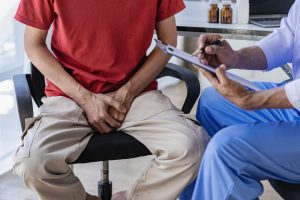Traditional Thai massage (TTM) is an ancient practice known for its therapeutic benefits.
It is an ancient therapeutic practice that has been used in various medical conditions, including post-surgery rehabilitation. The incorporation of TTM into rehabilitation programs has shown promising results in improving patient outcomes. This response explores the role of TTM in post-surgery rehabilitation based on data from multiple studies.
Improvement in Activities of Daily Living
Research shows that TTM significantly improves activities of daily living (ADLs) in post-surgery patients. A study involving 62 stroke patients integrated TTM, herbal treatments, and physical therapies into their rehabilitation program. This comprehensive approach led to notable improvements in recovery outcomes. The Barthel Index, which assesses a patient’s ability to perform ADLs such as feeding, bathing, dressing, and mobility, revealed significant progress.
After one month of the rehabilitation program, patients’ Barthel Index scores improved by 6.1 points, indicating better self-care and mobility. After three months, the improvement was even more pronounced, with scores increasing by 14.2 points. This substantial enhancement in ADLs highlights the effectiveness of TTM in facilitating independence in daily tasks.
Emotional well-being also improved significantly. The study recorded emotional scores, which measure mood and psychological health, showing a 0.7 point improvement after one month and a 0.9 point improvement after three months. These gains reflect reduced stress and anxiety, contributing to a more positive outlook during recovery.
Pain and sleep patterns were also assessed, with significant reductions in pain scores and improved sleep quality reported. Patients experienced less discomfort during daily activities, and better sleep contributed to overall health and recovery.
Pain Reduction and Enhanced Mobility
TTM has demonstrated significant efficacy in reducing chronic pain and enhancing mobility in post-surgery patients. Research indicates that TTM can reduce pain intensity by 25% to 80%, with the benefits lasting up to 15 weeks. This pain relief is particularly beneficial for patients recovering from surgeries that involve long-term pain management, such as orthopaedic surgeries.
A study on patients who underwent lumbar laminectomy found that TTM combined with standard nursing care significantly relieved abdominal distension and increased patient satisfaction with defecation care. Within three days post-surgery, 46.5% of patients receiving TTM experienced their first defecation, compared to 27.3% in the standard care group. Additionally, those who received TTM reported less abdominal discomfort by the third day post-surgery.
TTM’s stretching and pressure techniques improve muscle tension and flexibility, which are critical for regaining mobility after surgery. By addressing muscle stiffness and promoting relaxation, TTM helps patients restore their range of motion more quickly. Improved flexibility not only facilitates daily activities but also reduces the risk of complications such as joint stiffness and muscle atrophy.
Stress and Anxiety Reduction
TTM effectively reduces stress and anxiety, which are common challenges during post-surgery rehabilitation. A study focused on patients with back pain associated with myofascial trigger points demonstrated that TTM significantly lowered stress-related parameters. These included heart rate variability, anxiety, muscle tension, and pain intensity.
Heart rate variability, a key indicator of the body’s stress response, increased significantly, suggesting improved autonomic nervous system balance. Patients also experienced a marked decrease in anxiety levels, which is crucial for overall recovery. Lower anxiety can lead to better sleep patterns, reduced pain perception, and a more positive outlook on rehabilitation.
The study also noted significant increases in the pressure pain threshold, indicating that patients could tolerate more pressure without discomfort. This improvement in pain tolerance is essential for patients dealing with post-surgical pain, as it reduces the need for pain medication and its associated side effects.
Furthermore, the reduction in muscle tension helped alleviate pain and improve mobility, making it easier for patients to engage in physical therapy and other rehabilitative exercises.
Enhanced Recovery in Knee Osteoarthritis Patients
TTM has shown positive outcomes in enhancing recovery for patients with knee osteoarthritis. A study examined the effects of TTM combined with knee exercises on patients with this condition. The results indicated significant reductions in pain intensity and improvements in knee function and quality of life.
Patients who received TTM alongside their knee exercise regimen experienced notable relief from pain, which was measured using the Western Ontario and McMaster Universities Osteoarthritis Index (WOMAC) and the Oxford Knee Score (OKS). The WOMAC scores showed a significant decrease in pain and stiffness, while the OKS reflected improved joint function and patient satisfaction.
In addition to pain relief, TTM contributed to better physical function. Patients reported increased ease in performing daily activities, such as walking, climbing stairs, and standing from a seated position. This enhanced mobility is crucial for maintaining independence and quality of life in patients with knee osteoarthritis.
Furthermore, the combination of TTM and knee exercises led to improved overall well-being. Patients reported feeling more energetic and less limited by their condition. This holistic approach, integrating TTM with conventional exercise therapy, provides a comprehensive strategy for managing knee osteoarthritis and improving post-surgical recovery.
Comprehensive Rehabilitation Approach
Integrating TTM into a comprehensive rehabilitation approach can yield significant benefits. Research involving stroke patients demonstrated the effectiveness of a rehabilitation program that combined TTM with herbal treatments and physical therapies. Patients in this program showed substantial improvements in various aspects of recovery compared to those receiving conventional treatments alone.
Patients who participated in this integrated approach experienced better overall recovery outcomes. Beyond the previously mentioned improvements in the Barthel Index scores, these patients also reported enhanced emotional well-being, with notable improvements in mood and reduced stress levels. The holistic nature of this approach meant that pain scores decreased significantly, and sleep quality improved, both of which are vital for a complete recovery.
The study found that combining TTM with other therapies led to more rapid and sustained improvements. Patients achieved better physical and emotional outcomes within a shorter time frame, highlighting the synergistic effects of this multi-faceted approach. By addressing both physical impairments and emotional challenges, this comprehensive rehabilitation strategy ensures a more balanced and effective recovery process.
The Holistic Benefits of Traditional Thai Massage in Rehabilitation
TTM plays a transformative role in post-surgery rehabilitation, offering a holistic approach that extends beyond physical healing. By integrating TTM into rehabilitation programs, patients not only experience significant pain relief and improved mobility but also enjoy enhanced emotional well-being and reduced anxiety.
The ancient techniques of TTM provide a unique blend of physical and mental benefits, promoting a faster and more comprehensive recovery. As the medical community continues to recognise the value of holistic treatments, TTM stands out as a powerful tool in the journey towards complete post-surgery recovery.
References
- Keeratitanont, K., Jensen, M. P., Chatchawan, U., & Auvichayapat, P. (2015). The efficacy of traditional Thai massage for the treatment of chronic pain: A systematic review. Complementary Therapies in Clinical Practice, 21(1), 26–32. https://doi.org/10.1016/j.ctcp.2015.01.006
- Sibbritt, D., Van Der Riet, P., Dedkhard, S., & Srithong, K. (2012). Rehabilitation of stroke patients using traditional Thai massage, herbal treatments and physical therapies. https://www.semanticscholar.org/paper/Rehabilitation-of-stroke-patients-using-traditional-Sibbritt-Riet/d03da7bad416dd2a3d476cfd3ec52f75b8f4fcc3
- Siriraj Medical Journal. (n.d.). https://he02.tci-thaijo.org/index.php/sirirajmedj
- Ruangchainikom, M. (2019). The Effects of the Thai Traditional Medicine of Abdominal Massage on Defecation in Post Lumbar Laminectomy Patients. https://www.semanticscholar.org/paper/The-Effects-of-the-Thai-Traditional-Medicine-of-on-Ruangchainikom/e2a2224d8e67f132bf17cf5141f105b8bea89b4d
- Buttagat, V., Eungpinichpong, W., Chatchawan, U., & Kharmwan, S. (2011). The immediate effects of traditional Thai massage on heart rate variability and stress-related parameters in patients with back pain associated with myofascial trigger points. Journal of Bodywork and Movement Therapies, 15(1), 15–23. https://doi.org/10.1016/j.jbmt.2009.06.005
- Van Der Riet, P., Maguire, J., Dedkhard, S., & Sibbritt, D. (2015). Are traditional Thai therapies better than conventional treatment for stroke rehabilitation? A quasi-experimental study. European Journal of Integrative Medicine, 7(1), 16–22. https://doi.org/10.1016/j.eujim.2014.01.011
- Human Verification. (n.d.). https://www.semanticscholar.org/paper/The-Effects-of-Applied-Thai-Traditional-Massage-on-Boonperm-Wamontree/c8e1343c0bd4b3b69304515747026acb8f50db40














